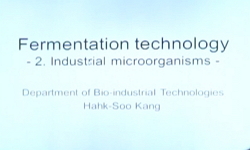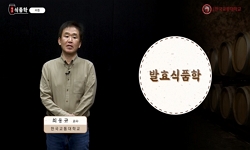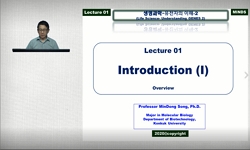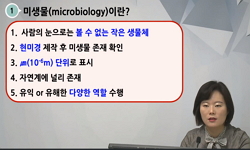경상북도 문경시에서 재배되는 오미자를 사용하여 전통적인 과실주 제조법으로 만든 오미자 발효주, 주기적인 추가가당 및 건조오미자를 이용한 오미자 발효주의 이화학적 특징과 관능적 ...
http://chineseinput.net/에서 pinyin(병음)방식으로 중국어를 변환할 수 있습니다.
변환된 중국어를 복사하여 사용하시면 됩니다.
- 中文 을 입력하시려면 zhongwen을 입력하시고 space를누르시면됩니다.
- 北京 을 입력하시려면 beijing을 입력하시고 space를 누르시면 됩니다.
https://www.riss.kr/link?id=A76365157
- 저자
- 발행기관
- 학술지명
- 권호사항
-
발행연도
2009
-
작성언어
Korean
- 주제어
-
등재정보
KCI등재,SCOPUS
-
자료형태
학술저널
- 발행기관 URL
-
수록면
182-187(6쪽)
-
KCI 피인용횟수
13
- 제공처
- 소장기관
-
0
상세조회 -
0
다운로드
부가정보
국문 초록 (Abstract)
경상북도 문경시에서 재배되는 오미자를 사용하여 전통적인 과실주 제조법으로 만든 오미자 발효주, 주기적인 추가가당 및 건조오미자를 이용한 오미자 발효주의 이화학적 특징과 관능적 특성을 비교하였다. 24~28일간의 발효과정 중 4일 간격으로 시료를 채취하여 pH를 측정한 결과 전통적인 과실주 제조방법으로 제조한 오미자 발효주, 주기적인 추가가당 및 건조오미자를 사용하여 제조한 오미자 발효주의 pH는 2~3으로 큰 변화가 없었다. 산도는 전통적인 과실주 제조방법으로 발효한 오미자 발효주는 2.5%로 유지되었으며 반복적으로 추가 가당을 해서 제조한 오미자 발효주는 3.3%에서 0.8%로 감소하였고 건조오미자를 사용하여 제조한 오미자 발효주는 발효 초기에 0.2%에서 발효 종료 시 9%로 높게 나타났다. 당도는 전통적인 과실주 제조방법으로 발효한 오미자 발효주와 주기적으로 추가 가당을 하여 제조한 오미자 발효주의 초기당이 24°Brix에서 발효 종료 시 9°Brix와 6.5oBrix로 각각 감소하였고 건조오미자를 사용한 오미자 발효주는 43°Brix에서 34°Brix로 감소하였다. 알코올 함량은 3가지 방법 모두 발효 종료 시 12%로 나타났다. 효모수는 전통적인 과실주 제조방법으로 제조한 오미자 발효주는 발효 초기에는 5.7 log CFU/mL에서 발효 종료 시는 4.3 log CFU/mL로 감소하였고, 주기적으로 추가 가당을 하여 제조한 오미자 발효주와 건조오미자를 사용한 오미자 발효주는 발효 초기에는 각각 6.5, 6.9 log CFU/mL에서 발효 종료 시는 4.4, 4.6 log CFU/mL로 감소하였다 관능평가에서 주기적으로 추가 가당한 제조방법이 색, 향, 맛, 목넘김, 종합적 기호도의 모든 항목에서 가장 높은 점수를 받았으며 위의 결과들을 종합해본 결과, 오미자는 과실자체에 발효성당이 거의 없고 효모영양원이 적기 때문에 주기적으로 영양분을 가해준 제조방법이 가장 좋은 방법으로 나타났다.
다국어 초록 (Multilingual Abstract)
Physicochemical and organoleptic characteristics of omija wines made by traditional method, adding grape juice and sugar solution periodically, and with dry omija were compared. The pH values of all omija wines were ranged 2~3 during fermentation. The...
Physicochemical and organoleptic characteristics of omija wines made by traditional method, adding grape juice and sugar solution periodically, and with dry omija were compared. The pH values of all omija wines were ranged 2~3 during fermentation. The acidity value of omija wine made by traditional method was 2.5%, that of omija wine made by adding grape juice and sugar solution periodically decreased from 3.3% to 0.8%, and that of omija wine made with dry omija increased from 0.2% to 3.9%. Sucrose and alcohol contents were 6.5~34.5°Brix and 12% at the end of fermentation, respectively. The viable cell numbers of yeast decreased from 5.7~6.9 log CFU/mL to 4.3~4.6 log CFU/mL. Omija wine made by adding grape juice and sugar solution periodically had the highest sensory scores for color, taste, flavor, swallowing, and overall acceptability, and was significantly different from the both omija wines made by traditional method and with dry omija. Because omija is rarely fermented due to the little fermentative sugar content, omija wine made by adding grape juice and sugar solution periodically was shown to be the most appropriate.
참고문헌 (Reference)
1 김철희, "오미자의 전통발효에 의한 면역활성 증진" 한국약용작물학회 15 (15): 162-169, 2007
2 현규환, "오미자 성분에 관한 연구" 한국자원식물학회 15 (15): 1-7, 2002
3 노형일, "시판 와인효모의 발효 특성과 포도주 품질" 한국식품저장유통학회 15 (15): 317-324, 2008
4 황 영, "수박을 이용한 발효주의 제조" 한국식품과학회 36 (36): 50-57, 2004
5 강태수, "생대추를 이용한 와인의 발효 특성" 한국산업식품공학회 10 (10): 164-171, 2006
6 조계만, "단감(Diospyros kaki, T) 와인 제조에 관한 연구" 한국식품과학회 38 (38): 785-792, 2006
7 No WS, "Zymurgy" Baek-san publishing Co. 114-117, 2004
8 Lee JS, "The studies of composition of fatty acids and antioxidant activities in parts of omija (Schizandra chinensis Baillon)" 6 : 147-153, 1991
9 Sheo HJ, "The effect of Schizandrae fructus extract on blood constituents of alloxan induced diabetic rabbits" 16 : 262-267, 1987
10 Ikeya Y, "The constituents of Schizandra chinensis Baillon. XV. Isolation and structure determination of two new lignans, gomisin S and gomisin T" 36 : 3974-3979, 1988
1 김철희, "오미자의 전통발효에 의한 면역활성 증진" 한국약용작물학회 15 (15): 162-169, 2007
2 현규환, "오미자 성분에 관한 연구" 한국자원식물학회 15 (15): 1-7, 2002
3 노형일, "시판 와인효모의 발효 특성과 포도주 품질" 한국식품저장유통학회 15 (15): 317-324, 2008
4 황 영, "수박을 이용한 발효주의 제조" 한국식품과학회 36 (36): 50-57, 2004
5 강태수, "생대추를 이용한 와인의 발효 특성" 한국산업식품공학회 10 (10): 164-171, 2006
6 조계만, "단감(Diospyros kaki, T) 와인 제조에 관한 연구" 한국식품과학회 38 (38): 785-792, 2006
7 No WS, "Zymurgy" Baek-san publishing Co. 114-117, 2004
8 Lee JS, "The studies of composition of fatty acids and antioxidant activities in parts of omija (Schizandra chinensis Baillon)" 6 : 147-153, 1991
9 Sheo HJ, "The effect of Schizandrae fructus extract on blood constituents of alloxan induced diabetic rabbits" 16 : 262-267, 1987
10 Ikeya Y, "The constituents of Schizandra chinensis Baillon. XV. Isolation and structure determination of two new lignans, gomisin S and gomisin T" 36 : 3974-3979, 1988
11 Jang EJ, "Studies on the production of omija wine" Korea University 1985
12 Kim JO, "Studies on manufacture of kiwi fruit-wine" 5 : 99-104, 2001
13 Han EH, "Quality characteristics in mash of takju prepared by using different nuruk during fermentation" 29 : 555-562, 1997
14 Kang KC, "Optimization of beverage preparation from Schizandra chinensis baillon by response surface methodology" 24 : 74-81, 1992
15 Kim KI, "On the proximate composition, organic acids and anthocyanins of omija, Schizandra chinensis Baillon" 5 : 178-182, 1973
16 AOAC, "Official Methods of Analysis. 17th ed" Association of Official Analytical Chemists 942-, 2000
17 Jang SG, "Method of omijaju. Korean Patent 10-0566939"
18 Park YS, "Method of omija wine. Korean Patent 90-003705"
19 KFDA, "Food Code" Korean Food Industry Association 689-, 2006
20 Lee JS, "Effect of water extract in fruits of omija (Schizandra chinensis Baillon) on CCl4 toxicity" 5 : 253-257, 1990
21 Oh SL, "Composition of free sugars, free amino acids, non-volatile organic acids and tannins in the extracts of L. chinensis M., A. acutiloba K., S. chinensis B. and A. sessiliglorum S" 22 : 76-81, 1990
22 So MH, "Change in microorganisms and main components during takju brewing by modified nuruk" 12 : 226-232, 1999
23 Su JD, "Antioxidative flavonoids isolated from Osbekia chinensis L" 51 : 2801-2803, 1987
24 Kim TC, "Antioxidative effectiveness of methanol extract in galla rhois" 7 : 107-112, 1992
25 Kim HK, "Antioxidative activity and physiological activity of some Korean medicinal plants.Korean J Food Sci Technol 27:80-85" 27 : 80-85, 1995
26 Lee JS, "A study on the general components and minerals in parts of Omija (Schizandra chinensis baillon)" 4 : 173-176, 1989
27 Lee JS, "A study on the compositions of the total amino acids and free amino acids in parts of omija (Schizandra chinensis Baillon)" 4 : 181-184, 1989
동일학술지(권/호) 다른 논문
-
손바닥선인장의 열매와 줄기가 Streptozotocin으로 유발된 당뇨 쥐의 혈당 및 지질대사에 미치는 영향
- 한국식품영양과학회
- 윤진아(Jin A Yoon)
- 2009
- KCI등재,SCOPUS
-
세포 및 동물모델에서의 알코올에 의해 유발된 간손상에 대한 지구자 추출물의 보호효과
- 한국식품영양과학회
- 유양희(Yanghee You)
- 2009
- KCI등재,SCOPUS
-
Baicalein의 BALB/c Mice에서의 접촉성 피부알레르기 예방효과
- 한국식품영양과학회
- 김수현(Soo-Hyun Kim)
- 2009
- KCI등재,SCOPUS
-
- 한국식품영양과학회
- 서동주(Dong-Joo Seo)
- 2009
- KCI등재,SCOPUS
분석정보
인용정보 인용지수 설명보기
학술지 이력
| 연월일 | 이력구분 | 이력상세 | 등재구분 |
|---|---|---|---|
| 2023 | 평가예정 | 해외DB학술지평가 신청대상 (해외등재 학술지 평가) | |
| 2020-01-01 | 평가 | 등재학술지 유지 (해외등재 학술지 평가) |  |
| 2014-06-24 | 학회명변경 | 한글명 : 한국식품영양과학회지 -> 한국식품영양과학회영문명 : Journal of the Korean Society of Food Science and Nutrition -> The Korean Society of Food Science and Nutrition |  |
| 2014-04-02 | 학회명변경 | 한글명 : 한국식품영양과학회 -> 한국식품영양과학회지영문명 : 미등록 -> Journal of the Korean Society of Food Science and Nutrition |  |
| 2011-01-01 | 평가 | 등재학술지 유지 (등재유지) |  |
| 2009-01-01 | 평가 | 등재학술지 유지 (등재유지) |  |
| 2007-01-01 | 평가 | 등재학술지 유지 (등재유지) |  |
| 2005-01-01 | 평가 | 등재학술지 유지 (등재유지) |  |
| 2002-07-01 | 평가 | 등재학술지 선정 (등재후보2차) |  |
| 2000-01-01 | 평가 | 등재후보학술지 선정 (신규평가) |  |
학술지 인용정보
| 기준연도 | WOS-KCI 통합IF(2년) | KCIF(2년) | KCIF(3년) |
|---|---|---|---|
| 2016 | 1.03 | 1.03 | 1.13 |
| KCIF(4년) | KCIF(5년) | 중심성지수(3년) | 즉시성지수 |
| 1.18 | 1.2 | 1.993 | 0.21 |





 ScienceON
ScienceON DBpia
DBpia






